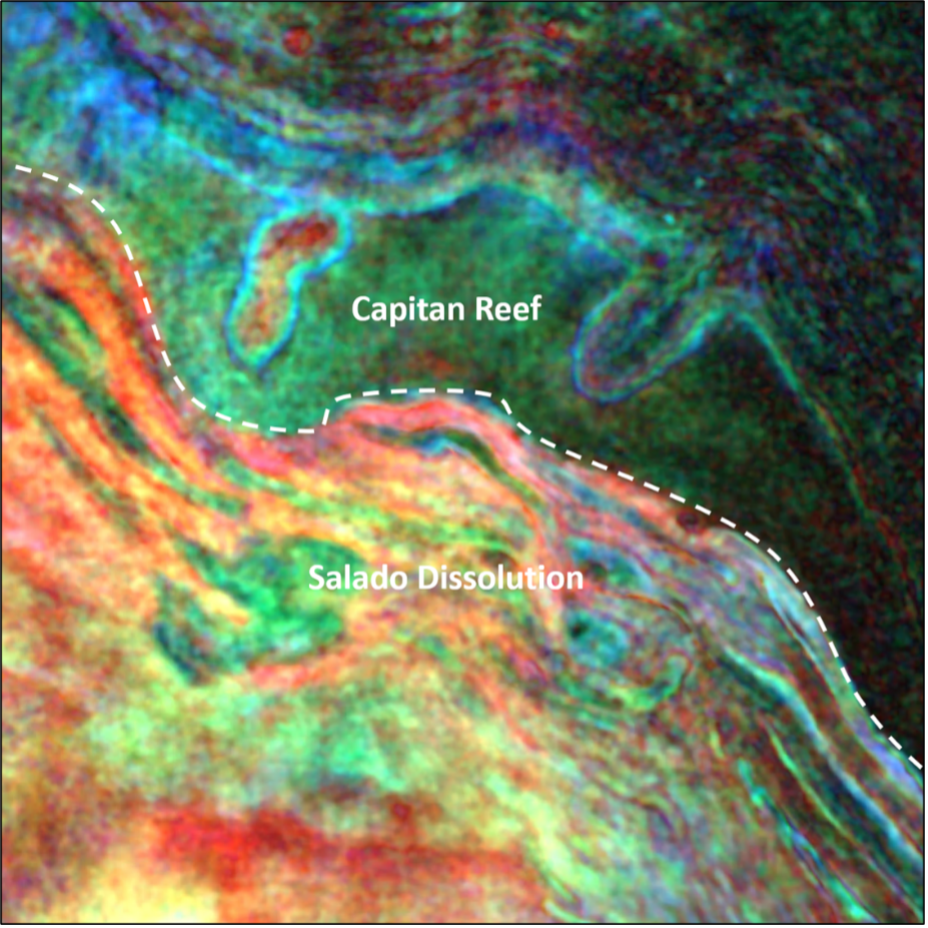Spectral Decomposition of the Capitan Reef and Salado Evaporites
Spectral Decomposition of the Capitan Reef and Salado Evaporites
Seismic spectral decomposition is a process that separates seismic data into frequency bands. The result shows the relative seismic amplitude within defined frequency bands. Seismic spectral decomposition is used to improve the resolution of thin bedding and show temporal bed thickness variability. The improvement is seen when wavelet length is spanning multiple subsurface layers, which results in a complex tuned reflection (Partyka, Gridley, & Lopez, 1999).

This image shows an RGB blend time slice over the Capitan Reef next to dissolution features. The RGB blend is over 8, 15, and 30 HZ respectively. These tuning frequencies are determined by analyzing the peak amplitudes over each frequency band and focusing on the maximums. The dissolution features vary greatly throughout the Capitan Reef. Flexing along the reef margin may have caused fracturing that allowed for communication between the aquifer and Salado salt beds resulting in dissolution features that are highlighted here. (Anderson, 1981).
About the Author
Taylor McKay is Jr. Geophysicist focused on understanding the value that seismic attributes and rock properties bring to subsurface interpretation.
References
Anderson, R. Y. (1981). Deep-seated Salt Dissolution in the Delaware Basin, Texas and New Mexico. New Mexico Geological Society Special Publication Number 10, 133-145.
Partyka, G., Gridley, J., & Lopez, J. (1999). Interpretational applications of spectral decomposition in reservoir characterization. The Leading Edge, 353-360. doi:doi:10.1190/1.1438295
Industry Article
Author
Taylor McKay, Fairfield Geotechologies Jr. Geophysicist